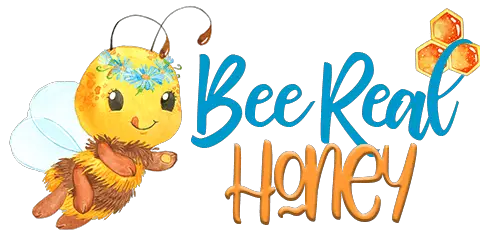*This post may have affiliate links, which means I may receive commissions if you choose to purchase through links I provide (at no extra cost to you). As an Amazon Associate I earn from qualifying purchases. Please read my disclaimer for additional details..
Who does not love honey? Honey has so many uses and people just cannot get enough. Honey has so many variations like alfalfa, sunflower, lavender, goldenrod, wildflower, and clover honey. Wait, aren’t clovers wildflowers? If so, what are the differences between clover and wildflower honey?
Let us analyze clover honey and wildflower honey to learn their differences, sources, which is sweeter, and better. Get ready for the battle between clover vs. wildflower honey.
What are clover and wildflower honey?
Clover honey is honey made with nectar collected from at least 50% clover flowers. Wildflower honey is honey made from the nectar of different wildflower blooms.
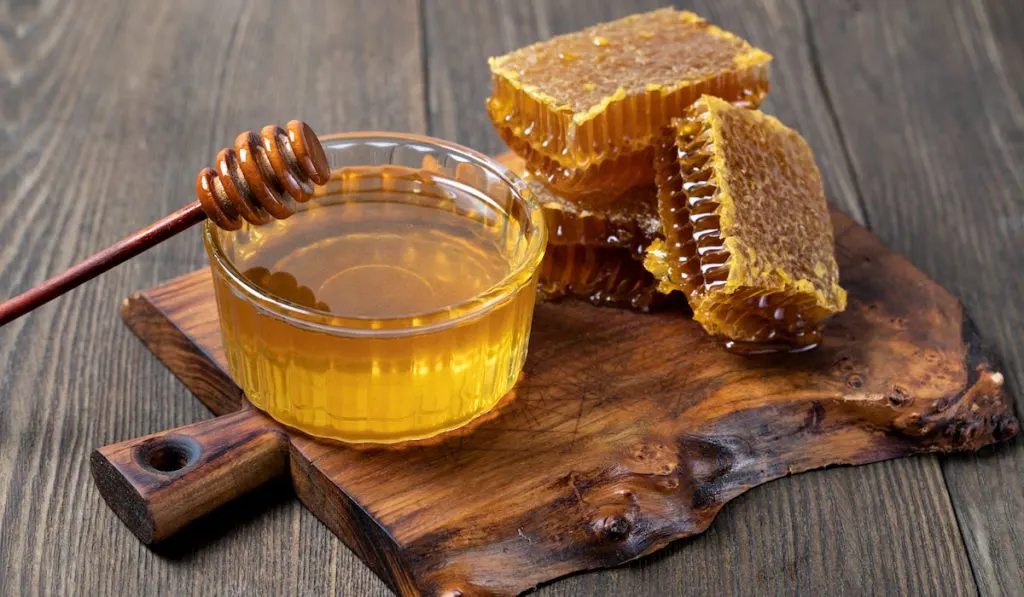
Differences between clover and wildflower honey include the:
- Honey taste
- Nectar source
- Honey texture
- Uses of the honey
- Color of the honey
How does clover and wildflower honey taste? What does a nectar source mean? It is time to carefully analyze both types of honey.
Table of Contents
Analyzing Clover and Wildflower Honey
Clover Honey

Clover honey is simple monofloral honey made by bees from the nectar of clover flowers. Monofloral honey is any honey that was predominantly made from the nectar of a particular plant.
Some types of clover used to make clover honey are:
- Red clover
- Alsike clover
- Dutch clover
- Sweet clover
- Crimson clover
- White blossom clover
- Yellow blossom clover
Clover honey is the most common type of honey. Clover honey is very popular because bees love honey and farmers use clovers to fix their unused land.
Clover, as a leguminous plant, can increase the amount of nitrogen in the soil, prevent erosion, and even serve as fodder for livestock. The benefits of clovers to farmers make clover honey the most common form of honey.
Clover honey has a sweet but mild taste, does not linger in the mouth nor fight with other tastes in a dish.
Honey made from different clovers might have different tastes, so clover honey made from various clover plants are commonly mixed (during processing) to produce a uniform taste.
Wildflower Honey
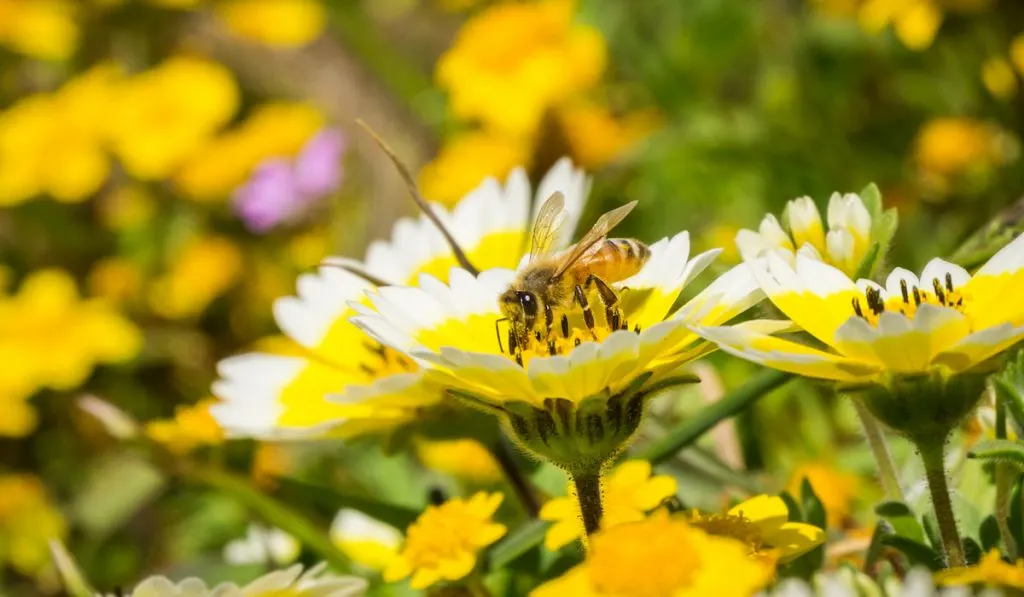
Wildflower honey, as the name implies, is honey made from the bloom of various wildflowers.
Region and time of the year affect the available wildflower bloom, so the characteristics of wildflower honey differ from place to place and season to season.
Unlike monofloral clover honey, wildflower honey is not made from the nectar of a specific plant. Some types of wildflowers are:
- Poppy
- Bee balm
- Bellflower
- Baby blue eyes
- Lady’s bedstraw
- Blackeyed Susan
- Purple coneflower
Some types of clovers are wildflowers, so when honey is made from various wildflowers including clovers, it is called wildflower honey.
Wildflower honey characteristics such as taste, color, and texture depend on the time of the year and the region from which the bees collected nectar.
The color of wildflower honey ranges from light to dark brown. Honey taste and color are related; the darker the color, the stronger the flavor.
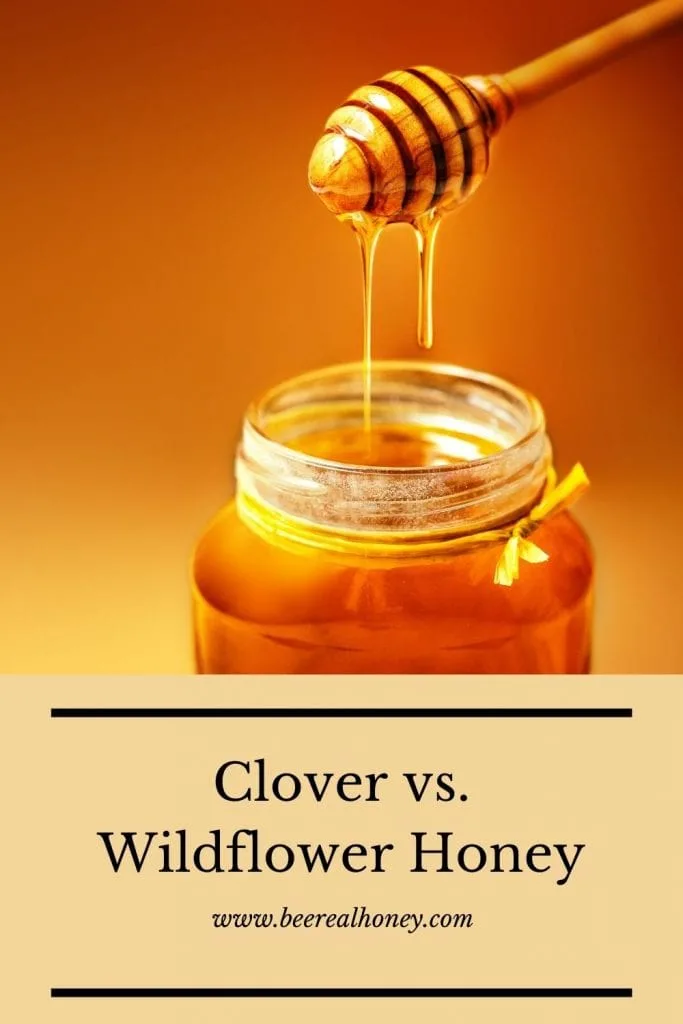
What Are the Differences Between Clover and Wildflower Honey?
From the explanations above, clover and wildflower honey differences are:
| Characteristic | Clover Honey | Wildflower honey |
| Type | Monofloral or varietal honey | Poly or multifloral honey |
| Source | Nectar from red, alsike, Dutch, sweet, crimson clover, etc. | Nectar from Poppy, bee balm, bellflower, baby blue eyes, etc. |
| Color | Light brown | Color ranges from light to dark brown depending on the time of the year and region |
| Taste | Sweet and mild, does not linger in the mouth nor fight with other tastes. | Taste depends on the time of the year and region. Wildflower honey usually has a strong taste. |
| Use | Preferable for direct use like applying on cookies and bread. | Best used in recipes that require honey. |
Which is better for you between clover and wildflower honey? People have their choices. Both clover and wildflower honey are sweet, some people might prefer clover honey over wildflower honey (and vice versa).
Have you heard of raw honey before? What are the differences between raw honey and clover/wildflower honey? Which is better for you? Keep reading.

Differences between Raw Honey and Clover/Wildflower Honey
Raw honey is any kind of available honey that is straight from the honeycomb. Both clover and wildflower honey have a raw and processed form of honey.
The question should be: what are the differences between raw and processed honey? It depends on the content of the raw honey, and the method used to process the honey. Processed honey was pasteurized to kill some bacteria and denature some enzymes to increase the shelve-life.
A few characteristics of raw honey are:
- Color: The color of raw honey is cloudier due to the presence of a few content filtered-out during the process of making processed honey.
- Content: Raw honey contains propolis (a glue-like substance used in keeping the hive together), bee pollen, dead bees, unfiltered enzymes (used by bees during honey production), etc.
- Texture: Raw honey has a rough feel due to the presence of unfiltered content
That being said, let us discuss some benefits of raw honey.
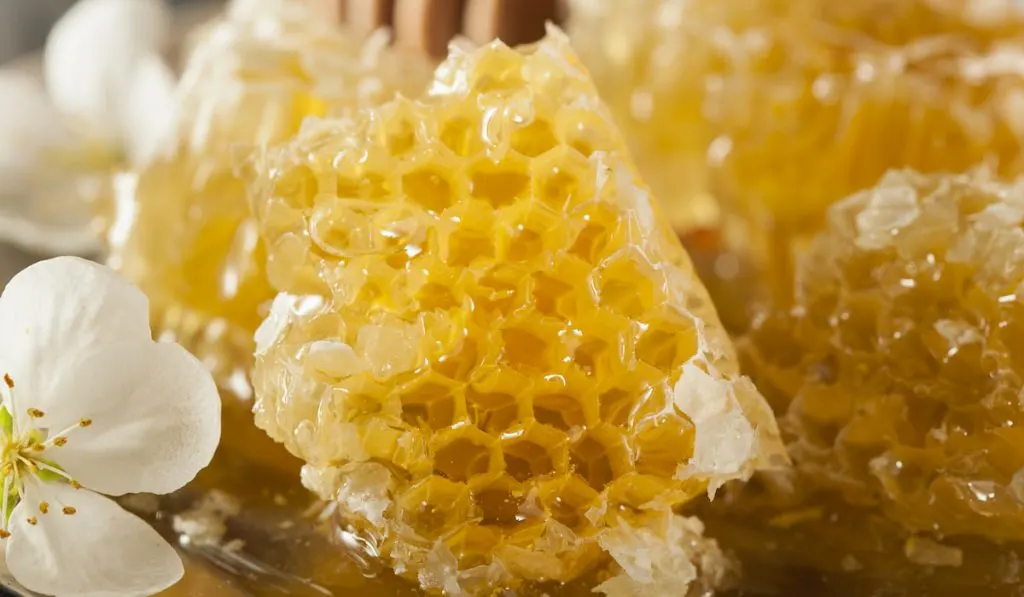
Benefits of Raw Honey
To know the benefits of raw honey that are not found in processed honey, we have to analyze some unique contents of raw honey. We will analyze bee pollen and propolis.
Presence of Bee Pollen
Bee pollens are balls or pellets of pollen gotten by bees from flowers. Even though honeybees collect nectar from flowers, they return to the hive with some specks of pollen dust.
A few health benefits of bee pollen are:
- Pain-relieving properties
- Bee pollen has antioxidant properties
- Presence of anti-inflammatory properties
Some health benefits of propolis are:
- The potentials of propolis against ulcer
- The anti-inflammatory properties of propolis
- Presence of vitamins B, C, and E, magnesium, potassium, and beneficial enzymes
(source)
Whether you prefer clover honey or wildflower honey, you should search for their raw forms. Raw honey may not be found easily in stores. To get raw honey, you should get it from a direct source (a local beekeeper).

Final Thoughts
This liquid gold called honey has so many benefits. Honey can be classified as raw or processed honey. The taste, color, texture, and other characteristics of honey depends on the plant from which bees collected nectar.
Clover honey is a monofloral honey made predominantly from the nectar of clovers. Wildflower honey is a multifloral honey made from the nectar of different wildflowers.
Have you tasted clover and wildflower honey before? Which of them do you prefer? Share your thoughts in the comment section below.
